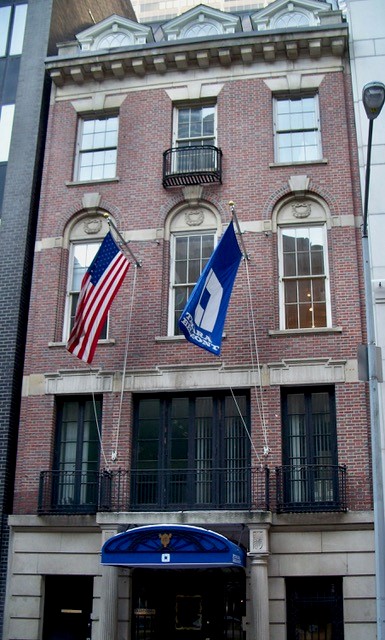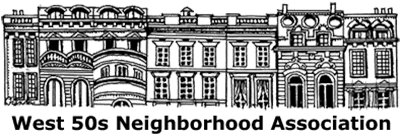
Origin
The Edith Andrews Logan residence was originally designed and constructed in 1870 by the prolific architect-builder John G. Prague as part of a row of four story-and-basement, single-family brownstone row houses. Towards the end of the 19th century, the area around Fifth Avenue below Central Park developed as Manhattan’s most prestigious residential enclave, due in no small part to the Vanderbilt family’s growing presence on the avenue.
In 1903, this row house was purchased by Edith Andrews Logan, a native of Youngstown, Ohio, and the wealthy widow of horse breeder and military commander John Alexander Logan, Jr. Mrs. Logan commissioned architect Augustus N. Allen to transform her row house into an elegant neo-Federal style townhouse.
Design
During this renovation, Allen moved the entrance to the center of the ground story and converted the full fourth story into a half-story peaked roof with dormers. The updated façade—and the resulting changes to the interior layout—represented the new “American Basement” type of row house design that was becoming popular among New York City’s architects in the 1890s and early 1900s. The symmetrical composition of the townhouse is enlivened by the use of Flemish bond brickwork and a variety of classically inspired motifs, including fluted columns at the ground story, iron balconnettes, incised limestone lintel courses,splayed keystone lintels; and a denticulated cornice beneath a row of pedimented dormers.
The first two stories of the building were converted to commercial use in the 1930s – first housing the fashionable “Royal Box” restaurant and later an exclusive beauty salon.
